The era of Wild parties is back. But is
there a dark side?
As economies rise and fall teetering on the
verge of collapse today’s world feels UN deniably insecure. And people like me
(those of us in our 20s and 30s whose lives have been inextricably intertwined
with globalization and the unending technological advances that accelerate our
perpetual connectivity) are suddenly taken with nostalgia for a time when life
seemed less complicated and, on the surface, at least, more fun: the 1920s.

The
era of Wild parties is back. But is there a dark side?
Runways in Paris, Milan and New York were
dominated by ‘20s inspired spring/summer collections. Gucci showcased low-waist
dresses with graphic beading. Veronica Etro’s waistless dresses featured prints
of intersecting black, white and Nile-green lines inspired by the art-deco
aesthetic of the era. Ralph Lauren had delicately glamorous pastel-coloured
satin flappers, feather boas, cloche hats and boyish silhouettes.
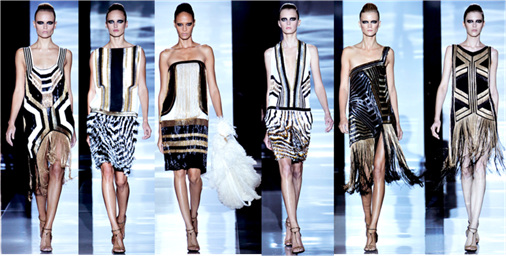
Gucci
showcased low-waist dresses with graphic beading.
I called Sandi Bangasser, a former
classmate of mine at The London School of Economics and Political Science, out
of curiosity to see if she had noticed the Roaring Twenties trend rearing its
head in Los Angeles, her new hometown. As it turned out, she had just bought a
drop waist dress at H&M and was getting ready to go to her first ‘20s themed
party at the Cicada Club, a historic art deco landmark. “I think people are
seeking out trends from this era because it’s perceived as a more innocent
time,” she explains. And, in fact, Roaring Twenties themed parties are popping
up in Montreal, New York and Los Angeles, where people decked out in jazz Age
garb dance the Charleston while mixologists concoct classic cocktails like gin
fizzes and sidecars.
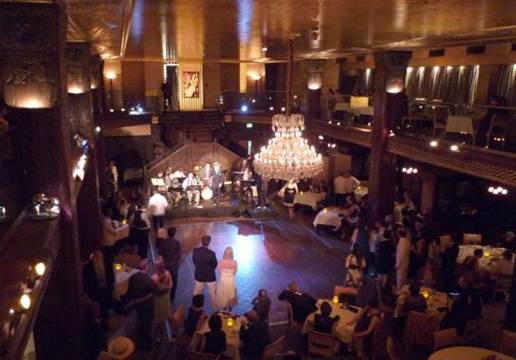
As
it turned out, she had just bought a drop waist dress at H&M and was
getting ready to go to her first ‘20s-themed party at the Cicada Club, a
historic art deco landmark.
“It was a time of optimism,” says Theresa
Ebagua, the designer of high-end shoe line Chelsea Paris. Since founding her
brand in 2010, Ehagua has made it her mission to infuse inspiration from the
‘20s into her collections of ankle-strap platform shoes, cone heeled booties
and d’Orsay pumps. For her next season, the Nigerian born, American-based
designer says that she will explore styles worn by women living in Paris in the
1920s. “I like the period because there was a [sense] of freedom,” explains
Ehagua. “It was very, very feminine.”
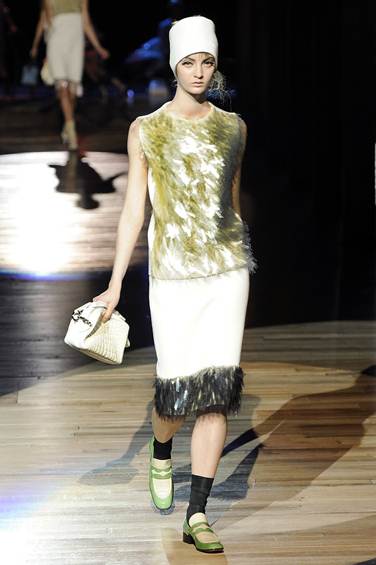
American-based
designer says that she will explore styles worn by women living in Paris in the
1920s.
That very freedom was one of the goals of
the feminist movement, which emerged in the ‘20s as women sought sexual and
social liberation. They cut their hair, smoked in public and won the right to
vote. And the independence that women wanted was totally embodied in the
clothes they wore, says Teresa A. Carbone, the Andrew W. Mellon curator of
American art at the Brooklyn Museum and the exhibition Youth and Beauty: Art of
the American Twenties. “Women were wearing looser fashions and shorter dresses.
They were physically liberated,” she explains. “Younger women didn’t want to dress
like their mothers.”
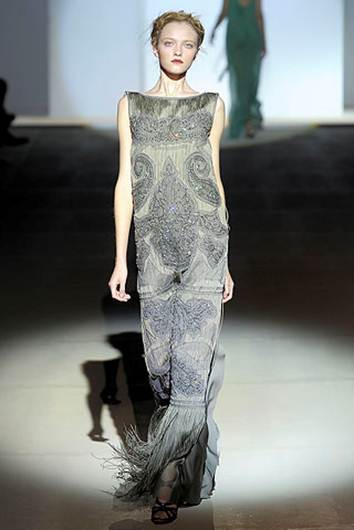
“Younger
women didn’t want to dress like their mothers.”
Lisa Padovani, costume designer on the dark
Prohibition-era HBO hit show Boardwalk Empire, notes that the same kind of
youthful rebellion is happening again and what is striking about the
fascination with the 1920s is that it’s mostly among people in their, well,
20s. “We just assumed that middle-aged or older people would watch this show,
hut it seems to be the opposite,” she says. And feIlow Boardwalk Empire costume
designer John Dunn agrees. “On the subway, I’m seeing young women wearing
cloche hats,” says Dunn, who is based in New York, where the show is filmed.
“When I walk around the East Village and Williamsburg, I’m seeing guys dressed
in ties and vests and fedoras. That just wasn’t happening four years ago.”
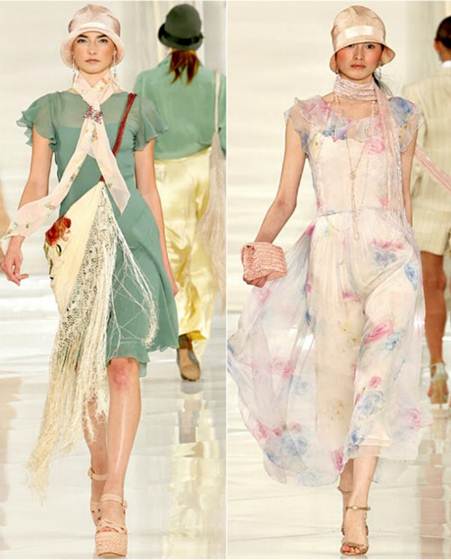
“We
just assumed that middle-aged or older people would watch this show, hut it
seems to be the opposite,” she says.